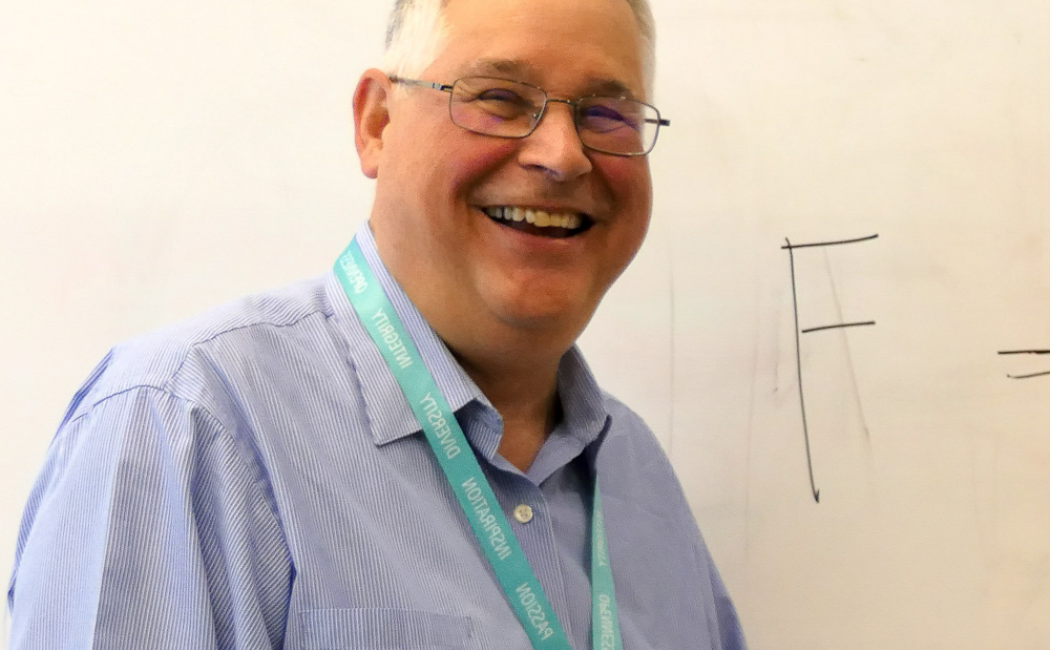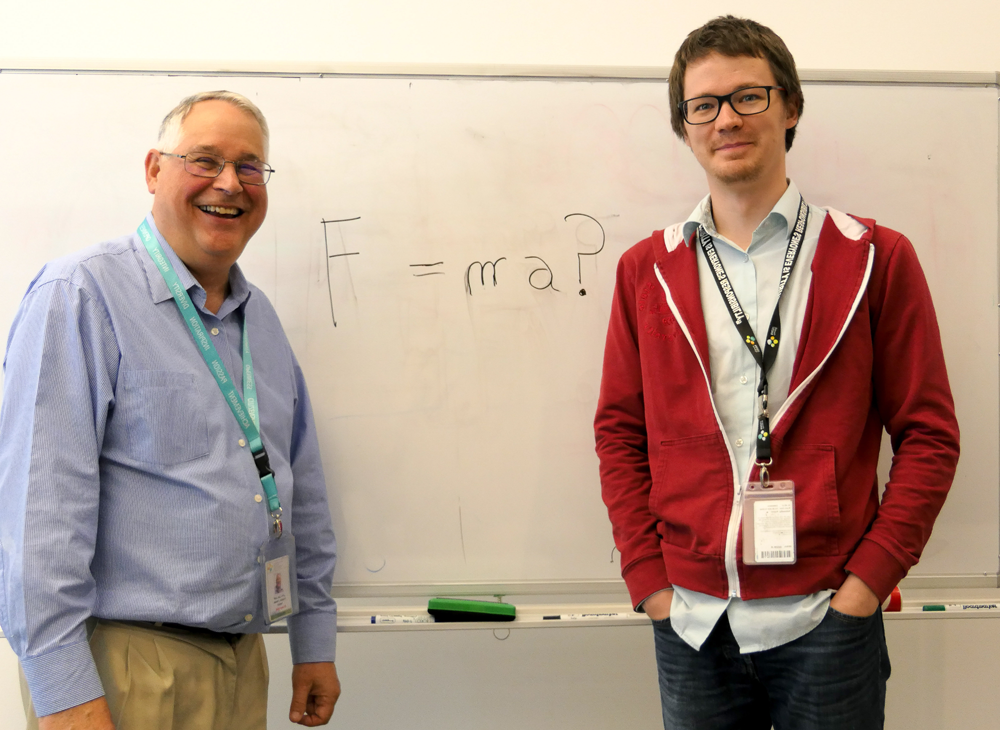.jpg?sfvrsn=39330263_0)
.jpg?sfvrsn=39330263_0)

08 May, 2018


Visiting Professor Clay Radke and research scientist Maxim Yutkin
Visiting Professor Clayton Radke spent five months working together with staff and students at ANPERC. Radke, who is Professor of Chemical and Biomolecular Engineering at the University of California Berkeley and a member of the prestigious US National Academy of Engineering, came to KAUST to teach a variety of courses within applied surface and colloid chemistry. He's also working on various research projects.
This is his second visit to KAUST and this time we were able to ask him about his personal experiences as a Visiting Professor at KAUST.
ANPERC: Could you give a short overview about the research you are working on specifically with ANPERC?
[CR]: I have two major projects underway with Research Scientist Dr. Maxim Yutkin. They are basic but also have direct application to ANPERC. In our first project we look in to the mechanism by which crude oil sticks to carbonate rock and how can we unstick it using simple aqueous brine chemistry. Our current hypothesis is that crude oil sticks to carbonate rock through carboxylate groups appended to the oil/water interface and complexing to the mineral surface through calcium ion bridges. By breaking those bridges, we hope to improve water wettability of the rock and recover additional oil.
Our second project tries to answer the question: what is the aqueous brine composition inside carbonate rock? When a brine is injected into a porous carbonate rock, the rock dissolves and changes the speciation chemistry of the injected brine. Without understanding how carbonate-reactive chemistry alters the injected-fluid composition, we have no way of predicting how wettability may be improved. We use theoretical transport principles and reaction-chemistry theory to predict how brine composition is changed during flow through the medium. Experimental core studies using Indiana limestone with the new Meta Rock flow system validate our theoretical predictions.
ANPERC: What do you think about the research environment at KAUST?
[CR]: As a Visiting Professor, KAUST provides an unparalleled research environment. First, experimental apparatus are here and available for use. At my home university, equipment is not widely shared and hence unavailable. For example, analysis of the brine compositions exiting the limestone cores is almost instantaneous here at KAUST. The same can be said of the sensors necessary in the QCMD studies, and the SFA and ancillary SFA coating equipment, etc. Said in another way, the core-laboratory philosophy of KAUST enables first-rate research. Few, if any, other universities have the necessary resources to establish well-equipped core laboratories. Second, as a Visiting Professor, I have no administrative responsibilities. I am free to work away to my heart's content, and I do!
ANPERC: The courses you have taught at KAUST cover a wide variety of subjects within applied surface and colloid chemistry. Why did you choose these subjects for the KAUST students and how can they benefit from them?
[CR]: ANPERC has a goal of enhancing oil and gas production in the Kingdom. To achieve that goal, students in ANPERC require an understanding of the surface and colloidal processes occurring inside porous rock containing multiphases. I have chosen to lecture on those topics relevant to porous media.
ANPERC: How does a Visiting Professor spend his spare time at KAUST?
[CR]: I find myself occupied socially almost continuously. There are Sunday library concerts, Sci-Fi lectures, many plays and concerts in the Auditorium, the Discovery Square movie house, bicycling to the King Abdullah Monument, swimming at the beach, exercising at the gym, Red Sea dinner cruises, lovely walks along the harbor on weekend evenings, just to name a few. Because so many visitors come to KAUST and because there are so many conferences, I find myself attending evening dinners almost every week, sometimes two or even three. Although I enjoy cooking, I have done very little!
Thank you Professor Radke!